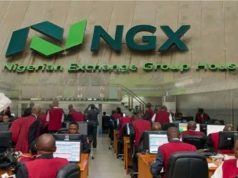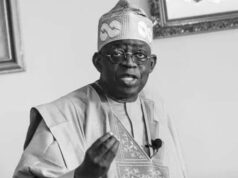WED, 15 JUNE, 2022-theGBJournal| At its latest meeting held in May, the Monetary Policy Committee (MPC) of the Central Bank of Nigeria (CBN) hiked its policy rate by 150bps to 13.0%. We assumed a rate hike on the back of rising inflation as well as recent policy rate hikes by central banks in advanced economies.
However, a modest rate hike was the general expectation. Followed the decision, it was expected that market interest rates would rise swiftly. However, market interest rates have not risen much since then. This makes us question the transmission mechanism between official and market rates.
On the day of the rise in the Monetary Policy Rate (MPR), 24 May, the 1-year T-bill rate was 4.86% and the Federal Government of Nigeria (FGN) 5-year Naira-denominated bond yielded 10.85%. At the end of last week, these rates were 5.06% and 10.76%, respectively, so the 1-year T-bills yield rose by just 20 basis points (bps) and the 5-year yield was 9bps lower. This raises the question: “If the CBN signals a rate rise with the MPR, how is that transmitted into the market?”

The clearest transmission method between the CBN and the financial system is the asymmetric corridor of +100bps and -700bps around the MPR which impacts the CBN’s Standing Lending Facility (SLF) and Standing Deposit Facility (SDF). The SLF is a line of short-term (overnight) credit available for commercial banks to draw on in times of liquidity shortages while the SDF is a window for banks to deposit excess liquidity (up to N2.0bn) overnight with the CBN. Following the rate hike, the SLF and SDF rates are at 14.0% and 6.0%. One-year T-bill rates (at least in the primary market, where they are 6.88%) are above the lower end of the asymmetric corridor, so to this extent one can demonstrate that the mechanism is working.
Two ways in which the monetary authorities could have forced up market interest rates exist in the regular T-bill auctions and the OMO (Open Market Operation) bill auctions. By supplying an unusually high volume of paper here, the authorities could have prompted investing institutions (such as pension funds and mutual funds) to demand high yields. Neither auction since 24 May has been particularly big, however, so this route has not been taken so far.
This leaves the Cash Reserve Requirement (CRR) of the CBN, which officially obliges banks to deposit 27.5% of customer deposits with the CBN, but which is widely acknowledged to be around 50% (or more) for practical purposes. The question here, as we see it, is: “Which way would you move the CRR to increase market interest rates?” Raise it and banks might turn away deposits, which would then find their way into Money Market funds (which are growing, as we showed last week) therefore adding money to the T-bill market and depressing rates. Cut the CRR and the banks might put excess liquidity into the money markets themselves.
To look at the history of MPR and market interest rates, there is no close correlation, but it appears that when the CBN signals a change, it gets its way. This was the case with successive rate cuts in 2020, for example. In 2022 GDP growth is exceeding expectations while inflation is stubbornly high at 16.82% pa and the case for a rate rise is clear. So, it may be a case of waiting for market interest rates to rise, rather than expecting a move in the short term. Our core view remains that a rise in government borrowing is likely to lead to an increase in Naira-denominated government borrowing this year, with the implication that market interest rates will rise.- This Insight is powered by Coronation Research
Twitter-@theGBJournal| Facebook-The Government and Business Journal|email: gbj@govbusinessjournal.ng|govandbusinessj@gmail.com










